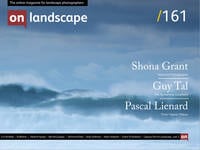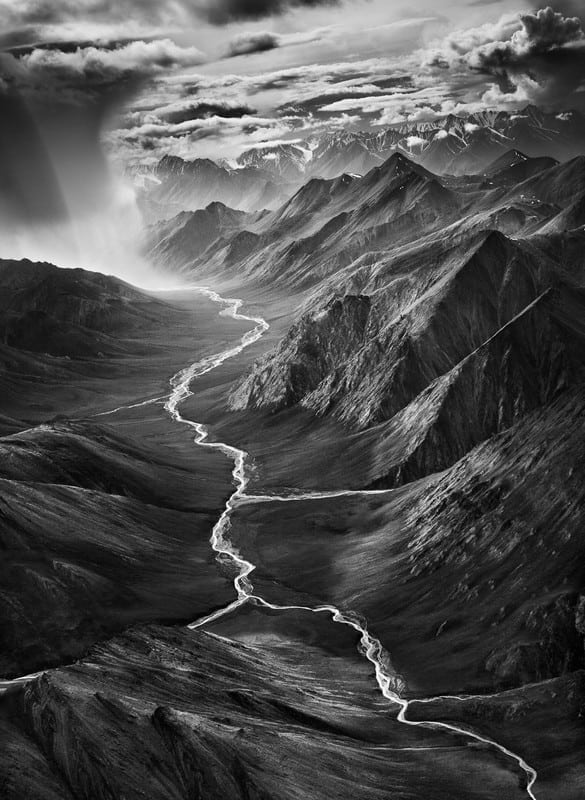Vladimír Kysela chooses one of his favourite images

Vladimir Kysela
I like stories, I am fascinated by the talents and skills of writers but also of music composers, painters, and architects. I am fascinated by the ability of actors and musicians to interpret given works. But do not look for snapshots or documentaries of a scene in my pictures, rather for an echo of stories embedded in interwoven layers that are both real and abstract in the manner of a writer embedding individual scenes in the pages of their book.
There are not many photos that will make you look so stunned that you remain in mute amusement and you have to keep coming back to them even after a long time. Something like that happened to me at the photograph from Genesis's book by Brazilian photographer Sebastiao Salgado.
Salgado was born in Aimorés, 1944, in the state of Minas Gerais, Brazil. He began to work as an economist, often travelling to Africa on missions for the World Bank. He switched to photography in 1973 and in 1979 he joined the international cooperative of photographers in Magnum Photos. He is particularly noted for his social documentary photography of workers in less developed nations and he has been a UNICEF Goodwill Ambassador since 2001. Salgado works on long term, self-assigned projects many of which have been published as books – at least that describes Wikipedia.
His story touches me personally and I find many parallels for him. I also got to photography as a second subject, and I work on my defined and long-term projects. In my photographic beginnings, most of my photos have been shot in black and white, and I have stayed there for some time after switching to digital photography. Black and white photography has enormous charm and is not as loud as colour photographs. The spectator can concentrate better on the shot. Missing colourfulness enhances the viewer's imagination, and if the shot succeeds, the resulting work is a thrilling experience - not just because of the technique and processing of the shot, but also because it has a huge imaginative potential inside of it.
His project Genesis consists of a series of photographs of landscapes and wildlife, as well as of human communities that continue to live in accordance with their ancestral traditions and cultures. The project is conceived as a potential path to humanity’s rediscovery of itself in nature. While looking at this picture you have exactly this deep feeling. A deep valley, where the river is cut into the bottom and flows somewhere in the distance where awake elements are waiting for it. You can feel the depth and breadth of the valley, its old age as if it were from time immemorial as if we were looking at the moment of the birth of our planet. It is as if the ancient and mighty forces of nature still prevailed in their original form. The whole book of Genesis will give you such feelings. The visitor's feelings in the huge gallery of nature. You are looking at the works of the greatest masters, admiring the gentle yet energetic brush strokes or sculptures created by wind, frost and water.
Having dedicated so much time, energy, and passion to the making of this work, Salgado calls GENESIS “my love letter to the planet.”
And what is the outcome from it for me or for the other photographers?
Salgado worked on his project for 8 years - this is pretty long, isn’t it? But isn’t it also right? Ansel Adams once said it was important to return to one place repeatedly. For me, I would add that this is true not only physically but also virtually. It is important to return not only to the same place but to persist in one topic for as long as it is finished. Whether it's a big project like Genesis or perhaps a landscape around a small lake. This also includes the subject of the project as such. Much has been said and written about the photo being created in the photographer's head long before the camera trigger is pushed. It does not mean just how I think of a specific shot, but also what experiences, models, and stimuli we are gradually collecting. Salgado has been working on projects that have been related to the environment and the human community for years. There is nothing more beautiful and uplifting than when I can gradually fulfil the chosen theme with my work.
Salgado’s work for me is not only a show of amazing talent for scene selection and general processing of a large topic into one project, but also a demonstration of great technical work, simply a photographic craft. Whenever I look at his book in peace and with a glass of good wine I realise that nothing is free and that I must never forget the hours of work on self-improvement of my own skills. Who would not want to achieve similar artistic and technical self-esteem and lightness? And all at once underlined by the pure rendering of shapes, contrasts and the story in black and white. Simply beautiful!


